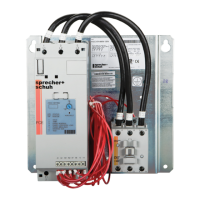Chapter 2:3
Chapter 2: Installation
e following installation considerations are provided as guidance for proper installation
of this controller. Due to the nature of this product, it may be applied in a variety of
applications so not all considerations may be applicable to a particular application. In all
cases, the local codes and standards governing this type of product must be observed.
Motor Branch Protection and Disconnecting Means
e controller includes motor overload protection; however it does not have means
to protect itself from a short circuit condition. Suitable branch circuit protection and
coordination must be provided per the NEC, or the equivalent local electrical code.
Electrical Noise Suppression
Electrical noise can be generated from various sources connected to the same power
as the controller. Sources of noise include inductive loads (i.e. relays and solenoids),
large motors and machinery, Variable Frequency Drives, and other high frequency
devices (i.e. welders)
Electrical noise can enter the product through power and control wiring and cause
damage to solid state components.
Mitigation of electrical noise can be accomplished through the following methods
Proper wiring practices including grounding, use of shielded cable were
appropriate, and separation of power, control, and signaling wires
Use of surge suppression devices on inductive loads
Use of isolation transformers for high frequency generators
Power Factor Correction Capacitors (PFCC)
Power Factor correction capacitors must always be used line side of the controller.
Use of PFCC’s on the output side of the controller will damage the starter.
Installation
Precautions

